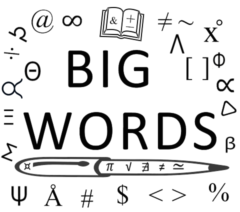My blog focuses on Financial Literacy/Money. While they can be helpful, credit card usage can cause havoc on the financial health of the user. The following contributed post is entitled, 7 Steps To Escaping Credit Card Debt.
* * *

Feeling overwhelmed by credit card debt? You are not alone. Credit card debt is one of the most common types of debt and it can quickly build up. The good news is that, even in extreme cases, there are many ways to successfully tackle credit card debt and regain financial control. Below are 7 steps that could be worth following to help you escape credit card debt.
Create a budget
The first step to helping you pay off your credit card debts should be to create a monthly budget if you don’t already have one. Work out how much you can afford to spend each month so that you’re able to pay your bills. Be prepared to make some cutbacks – this could include getting rid of unnecessary subscriptions, spending less on food/drinks and exploring more free social activities.
Minimize borrowing
Continuing to use your credit card will only add to your debts. Try to avoid any form of borrowing – use your debit card for all payments and avoid taking on extra loans or payment plans unless they’re absolutely necessary.
Consider debt consolidation
Maxed out multiple cards? Have other debts that you’re struggling to pay off? Taking out a debt consolidation loan could be one exception where taking out an extra loan has benefits – this is a large loan that is used to pay off multiple debts at once, turning multiple debt payments into one single monthly debt payment that is easier to keep track of. Just be wary that this could mean paying more interest in the long run.
Use the snowball method
Another way to tackle debts is to use the snowball method. This involves paying off the smallest debts first and working your way up to the largest debts. In the cases of credit cards on multiple cards, this could involve throwing everything you’ve got at the smallest credit card debts first. You can focus on the larger debts first, but this means having to juggle multiple debts for longer.
Talk to your creditors
Ignoring those phone calls and texts won’t make your debts go away. Get in contact with your creditors and see if you can arrange a method of paying back your debts. This could include paying off small amounts each week. In some cases, you may even be able to negotiate a way of reducing your debts such as reducing interest or even writing off some of your debt if it’s very large. Debt advisors can help you with this.
Explore new income streams
Extra income streams could help you to throw more money at your debts and pay them off quickly. It could also allow you some extra disposable income to spend on yourself so that you’re not having to make major cutbacks for months on end. A few ways to make extra income could include starting a side hustle, selling your clutter or asking your employer for extra hours/ a pay rise.
Get legal help if needed
If you find yourself in a situation where your debt feels unmanageable, there is always still the option of legal support. A debt relief attorney can provide guidance and help negotiate with creditors on your behalf. If last resort options like bankruptcy are necessary, a debt relief attorney may even be able to help you explore these and minimize future financial damage.
Conclusion
Escaping credit card debt often isn’t easy, but it is achievable with the right amount of determination and discipline. Stay positive, focus on the end goal and celebrate your progress along the way.

